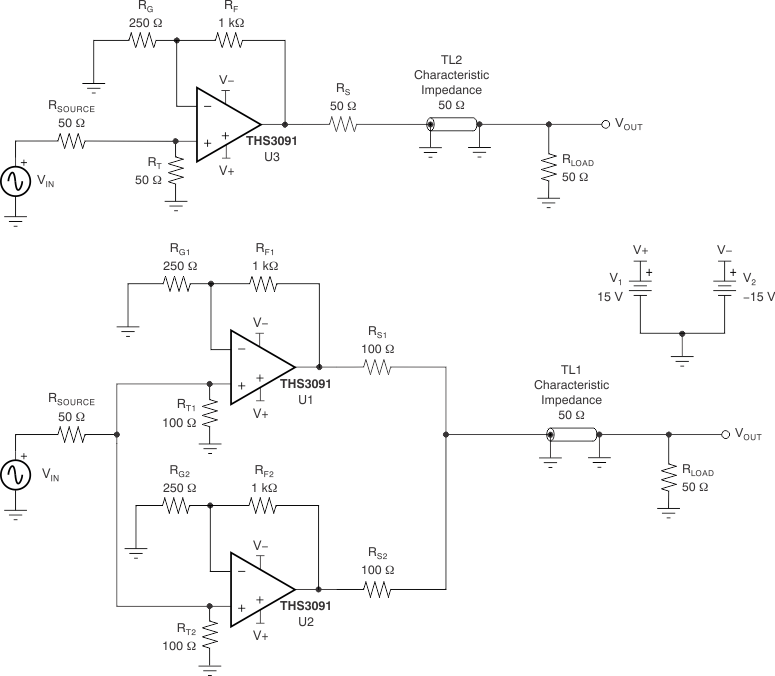SLOS423K september 2003 – april 2023 THS3091 , THS3095
PRODUCTION DATA
- 1 Features
- 2 Applications
- 3 Description
- 4 Revision History
- 5 Device Comparison Table
- 6 Pin Configuration and Functions
- 7 Specifications
- 8 Detailed Description
- 9 Application and Implementation
- 10Device and Documentation Support
- 11Mechanical, Packaging, and Orderable Information
Package Options
Mechanical Data (Package|Pins)
Thermal pad, mechanical data (Package|Pins)
- DDA|8
Orderable Information
9.2 Typical Application
The fundamental concept of load sharing is to drive a load using two or more of the same operational amplifiers. Each amplifier is driven by the same source. Figure 9-1 illustrates the schematic for this design. This concept effectively reduces the current load of each amplifier by 1/N, where N is the number of amplifiers. For further details on the design and performance of this circuit, see the Reference Design for Implementation of the Load Sharing Concept for Large-Signal Applications.
 Figure 9-1 Reference
THS3091 and THS3091 Load Sharing Test Configurations
Figure 9-1 Reference
THS3091 and THS3091 Load Sharing Test Configurations